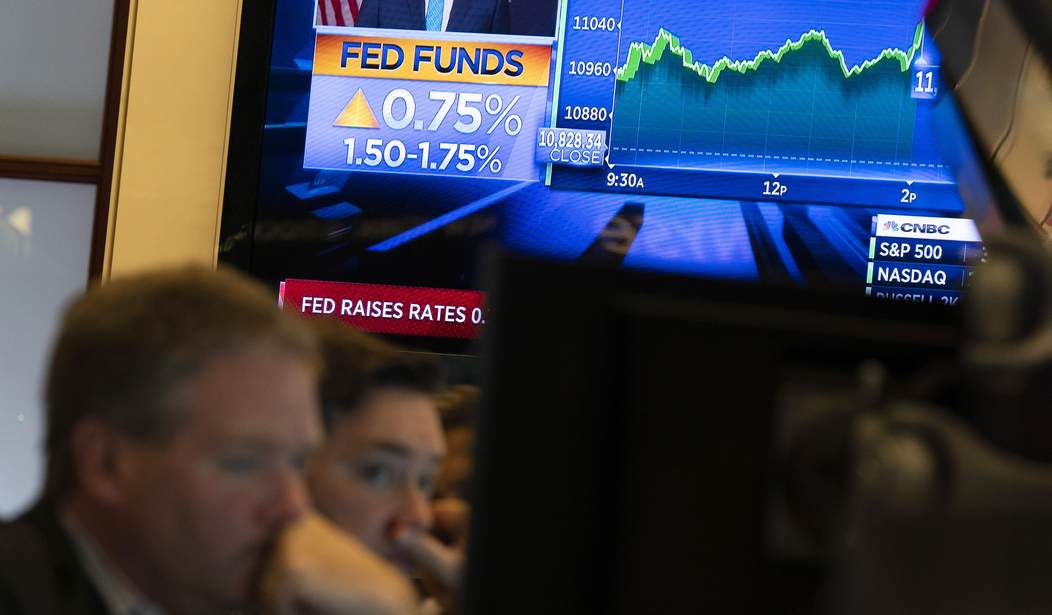“Is the US heading for a recession?” asks former Labor Secretary Robert Reich in Friday’s Guardian.
One presumes he’s asking rhetorically because all the signs are that we’re either already in a mild one (with worse to come) or there’s a real whopper headed our way.
At least according to the Atlanta Fed’s preview numbers for April-June, the economy’s minor shrinkage during the first three months of the year “improved” to zero-point-zero growth. If Atlanta is right, we’re technically (but not officially) in a recession.
The White House is either in deep denial about the economy’s true troubles, or is trying to gaslight the rest of us — take your pick. While Presidentish Joe Biden yells at clouds about his economic achievements, Americans’ real wages are shrinking, mortgage rates are skyrocketing, our credit card debt is way up, we’re paying more in taxes, and everything from tampons to baby formula goes randomly missing.
The only bright spot is that the economy continues generating jobs.
Of course, it’s easier to afford workers when they’re getting paid in shrinking dollars. Problem is, those shrinking dollars (and rising interest rates) are putting first homes out of reach of even more Millennials and GenZs. Homebuying, building, and filling houses with appliances are major economic drivers.
The Fed appears to be trying to engineer another “soft landing” like the one then-Fed Chair Alan Greenspan gave us in 1994. A soft landing is when the Fed wrangles a necessary economic slowdown without triggering a recession.
Color me dubious that the Fed can manage in 2022 or ’23 what Greenspan did in ’94.
The economy was basically sound in 1994. Unemployment was low, supply chains were secure, and inflation was at an enviable 2.56%. The Fed jacked up rates that year in order to prevent the economy from overheating and to then allow for sustainable growth.
Also greatly helping then: In the following two years, the new GOP Congress cut spending growth and taxes, and President Bill Clinton did a 180 away from his early tax-and-spend ambitions and basically embraced Reaganomics.
Under those conditions, it was almost child’s play for Greenspan — aka “The Maestro” — to give us a soft landing followed by sustained growth.
Today’s Fed doesn’t merely face much stronger headwinds, they’re at least a year late raising interest rates. Instead of getting ahead of the curve like Greenspan in ’94, Fed Chair Jerome Powell seems to be permanently behind the eight ball.
There are two types of inflation: Demand-side and supply-side.
Related, but exclusively for our VIPs: Is Everybody at the Federal Reserve on Drugs?
Lucky us, like the Country-Western bar in The Blues Brothers, we’re playing both kinds.
There have been at least six trillion funny-money dollars conjured up since 2020 to counteract the lockdowns. Then there’s Washington’s endless deficit spending. Both will keep a fire burning under the demand side, the latter for the foreseeable future.
That’s the demand-side inflation.
On the supply side, supplies of goods are constrained by lockdowns in China, overregulation against truckers in California, the Ukraine War, Biden’s war on domestic energy production, drought, etc.
Not only do we have too many dollars, we have too few goods.
Typically, high interest rates, left high enough for long enough, reduce aggregate demand and tame inflation. I’m not so sure times are typical enough for that to work this time.
So in my mind, it really isn’t a question of whether we’re in a recession or heading towards one.
Instead, I have three questions.
- When do American businesses start shedding workers, and by how much?
- Will Washington try to paper over yet another crisis (2001, 2007-09, 2020-21) with a lot of funny money?
- Or can we get new leadership willing to endure temporary pain to give us a longterm fix?
We can — and almost certainly will — get a new Congress after the midterms. They’d better be focused like a laser on cutting taxes, regulation, and spending.
That’s a potential upside, and maybe with a grownup Congress the markets will stop trashing everyone’s investments.
But the White House and the mammoth regulatory machine it sits atop will remain in the hands of the hard Left until at least 2025.
So hang on tight, because even the best-case scenario is going to be a bumpy ride.










Join the conversation as a VIP Member